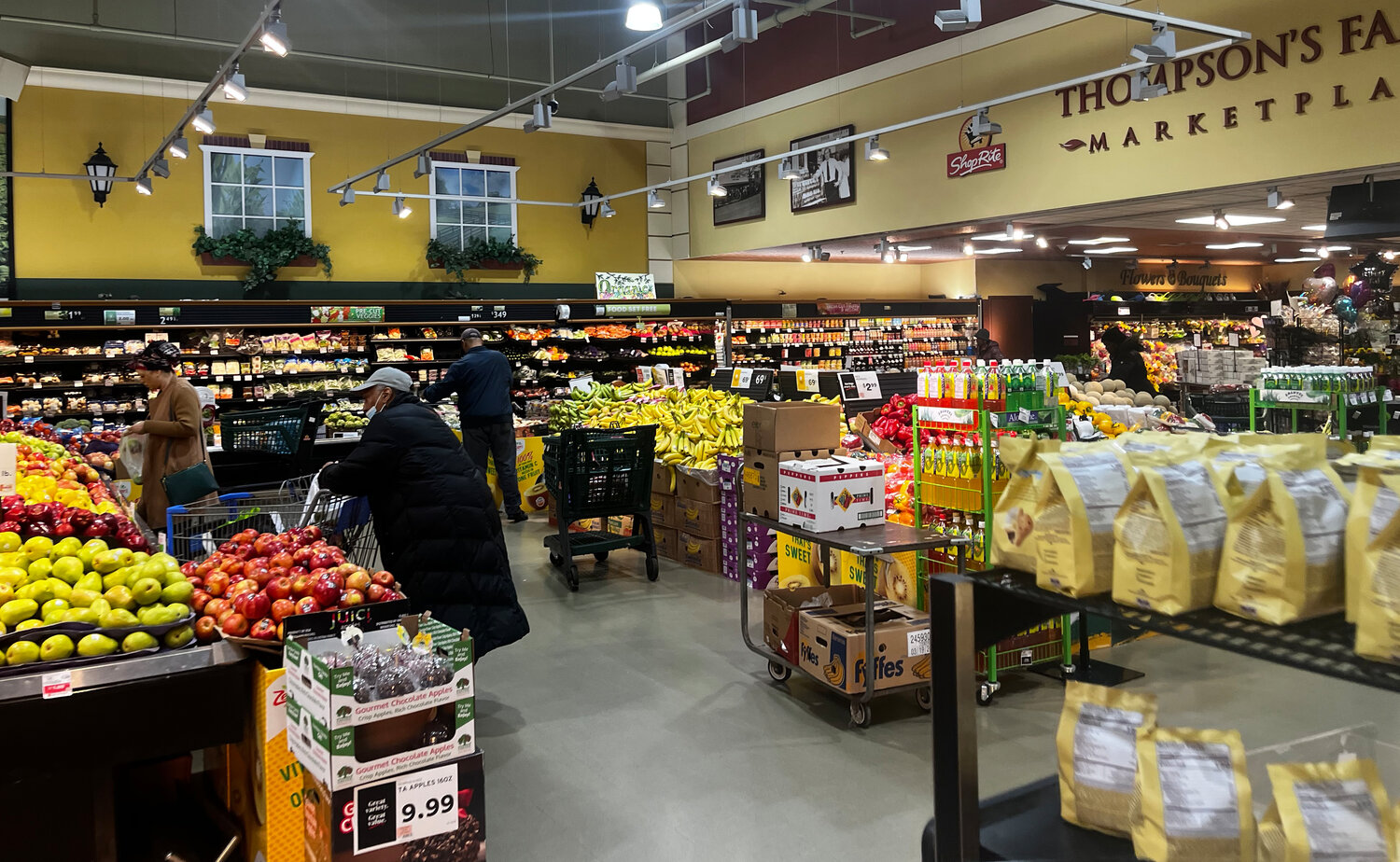Shoppers struggle as food prices soar amid inflation crisis
It is no secret that the financial impact of inflation is being felt across the country.
But many residents of Uniondale, who were already struggling to make ends meet before the pandemic, are now in crisis mode, as their financial situations have worsened.
According to the U.S. Bureau of Labor Statistics and economic data from the Federal Reserve, the average prices of food and beverages are roughly 22 to 25 percent higher now than they were four years ago, at the start of the pandemic — and families in this community are feeling it.
Recent inflation is often attributed to the pandemic, which brought about massive shortages and caused prices to skyrocket.
But since then, corporations have been reporting record-breaking numbers, with corporate profits now accounting for the highest share of national income in more than 10 years, according to the National Bureau of Economic Analysis.
“Pandemic-era supply chain disruptions enabled corporations to hike prices and juice profit margins to highs not seen in more than 60 years,” Kitty Richards, director of Groundwork Collaborative, an economic research and advocacy group, wrote in an analysis. “Now supply chains have returned to normal, but corporations in many sectors are still charging inflated prices and extracting exorbitant profit margins.”
Although Walmart has recently announced that it plans to restore some pre-inflation prices in its food aisles, consumers — many of whom say they are spending up to twice as much as they did before the pandemic on groceries — want to see this happen sooner rather than later. Especially in Uniondale, whose residents rely heavily on the connected ShopRite and Walmart supercenter in town for supplies and groceries.
Uniondale resident Harix Linares told the Herald during a trip to the supercenter last Saturday that he has seen the biweekly grocery bill for his family of six expand from roughly $600 to well over $1,200.
“Thank God I’m in a financial position where I can afford this change,” Linares said. “But I know for a lot of other families, this is a really hard time for them.”
And it is, as most other shoppers confirmed. Mary Jane Santos, a single mother and a customer of ShopRite in Uniondale, said that she had also seen her grocery bill double. Santos explained that on her biweekly shopping trips, she spends upward of $600 to feed her family of three — double what she used to pre-pandemic.
“The prices keep going up, but my salary doesn’t,” Santos said. “I’m spending double the money on groceries to feed my family, but I’m not making double the salary — I’m not getting an extra $300 to buy food.”
Santos said that she makes a decent amount of money, but it’s hard to stay afloat when most of it is spent on rising food prices and rent. She also complained about “shrinkflation,” in which consumers are spending the same amount of money, or more, on smaller packages of food and snacks.
According to research by Capital One, some major brands have reduced the size of their packaging, and the amount of food contained therein, by over 20 percent over the past year without reducing prices. In fact, many companies have reported record profits.
Capital One’s research found that shrinkflation has “effectively increased the cost per unit,” and is responsible for driving up “grocery price inflation” by over 10 percent.
Anther shopper, Beris Watson, who is originally from Jamaica, said he notices the smaller packaging and higher prices, but as a single man with no children, he is just grateful that there is food on the shelves at all.
“I’m from a third-world country,” Watson said, “so I know what it is like to see nothing on the shelves and you’re unable to find food, and during the pandemic, all of these shelves were empty. You couldn’t find anything. People were fighting over paper towels.
“So I am just grateful that there are things on the shelves to buy at all.”
But customers like Santos aren’t satisfied simply with an ample supply of food for sale.
“The worst part is, I’m paying all this money for less food in smaller packages,” she said, “and then I have to go ring it all up myself, because these billion-dollar corporations don’t want to pay cashiers because it’s less profitable for them. As if they don’t have enough.”
And unfortunately, Santos added, she doesn’t see a light at the end of the tunnel. “These corporations, who are bringing in these massive profits the last few years, need to stop being greedy and pay their workers a living wage,” she said. “But then they’ll claim if they do that, they’ll have to raise their prices” — which, she pointed out, they are doing regardless.
“It is just a vicious, never-ending cycle,” she concluded, “and I don’t think it’s going to get better any time soon.”






